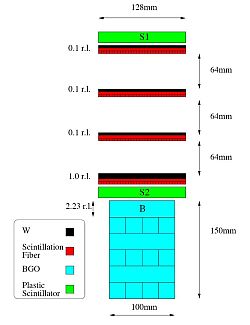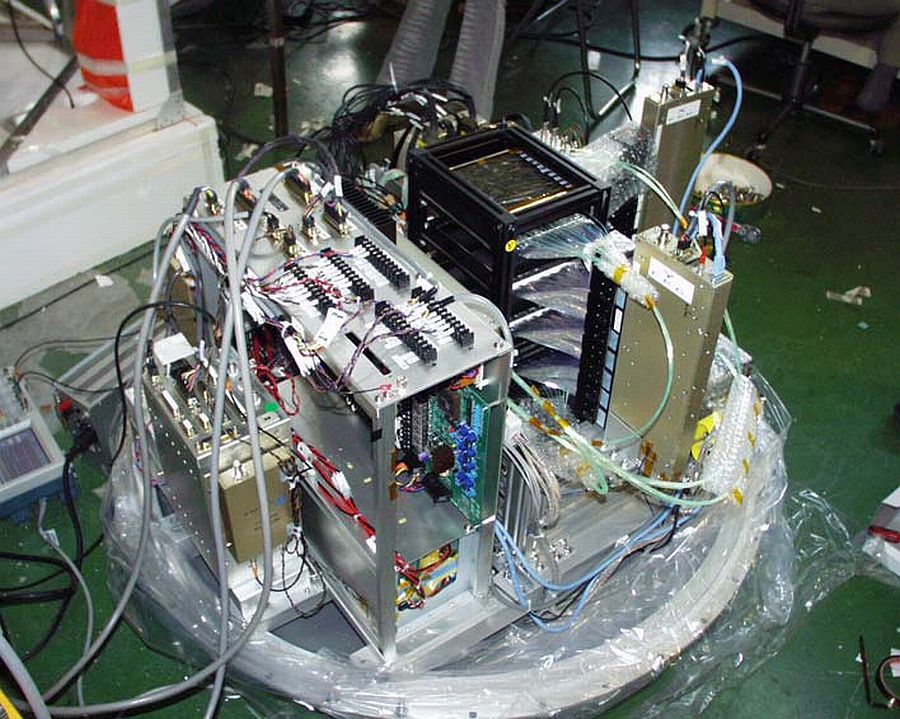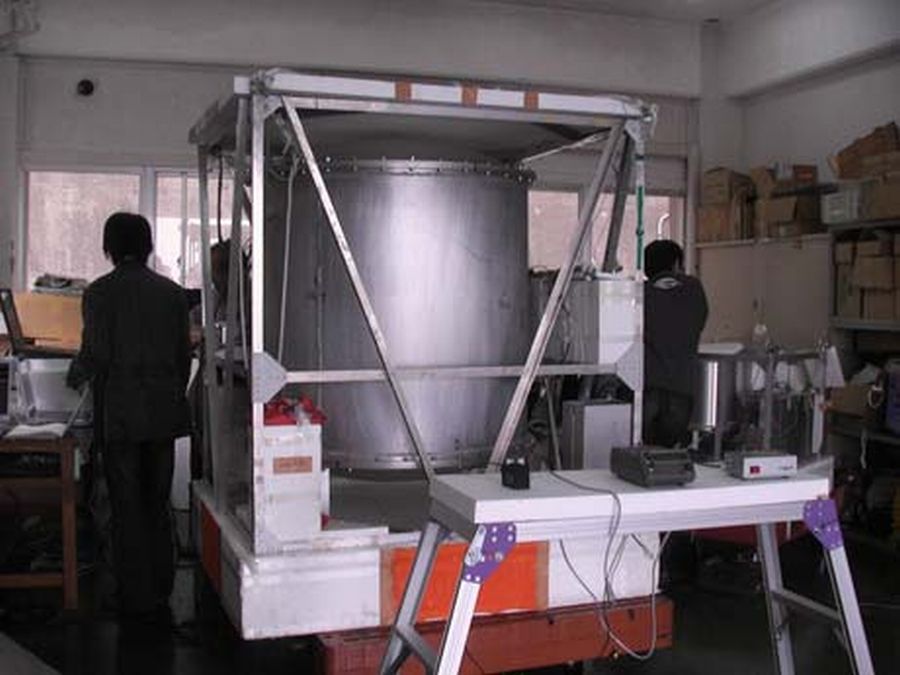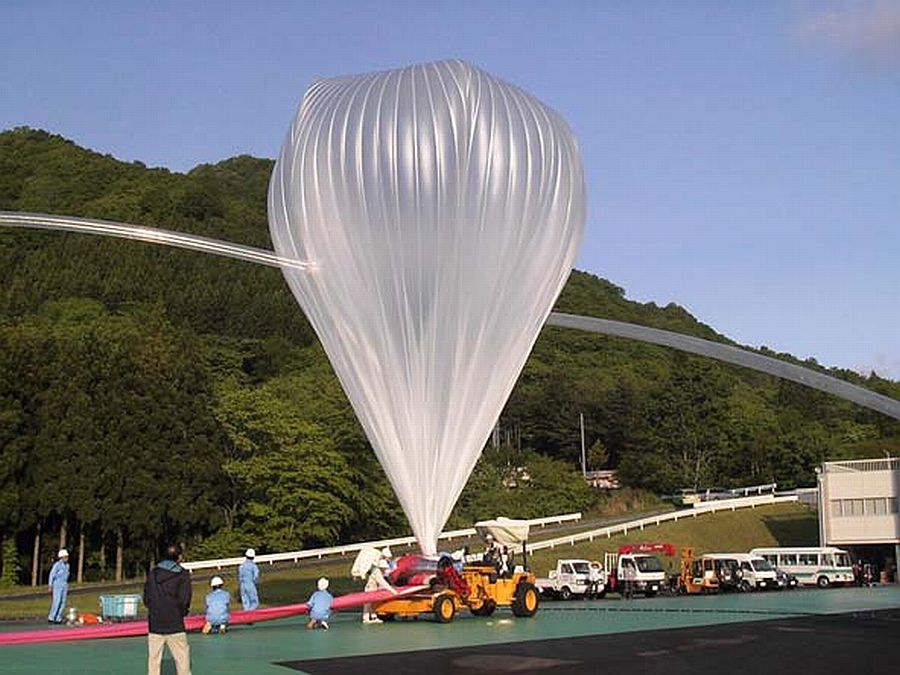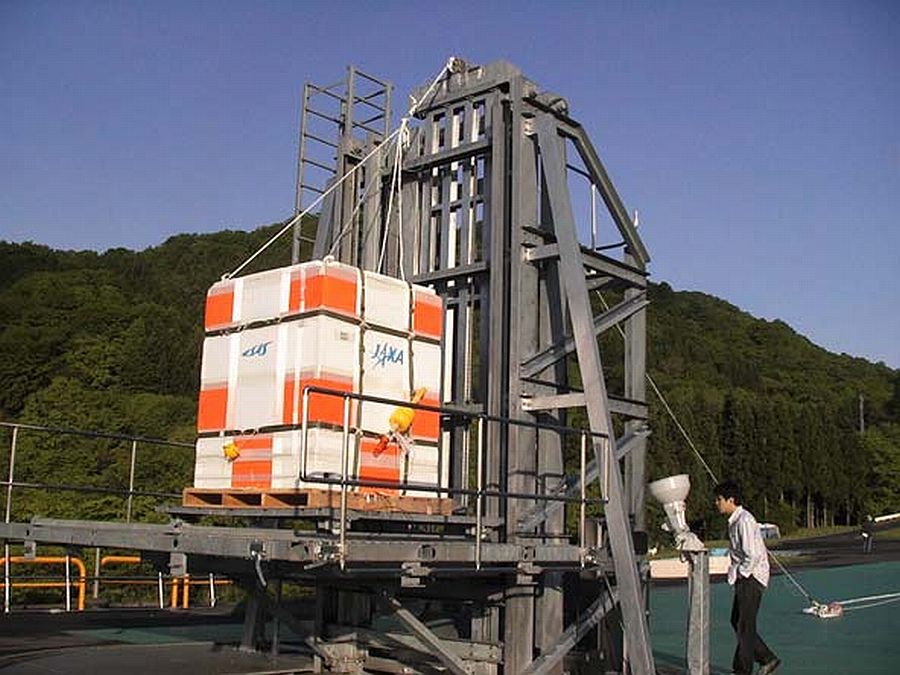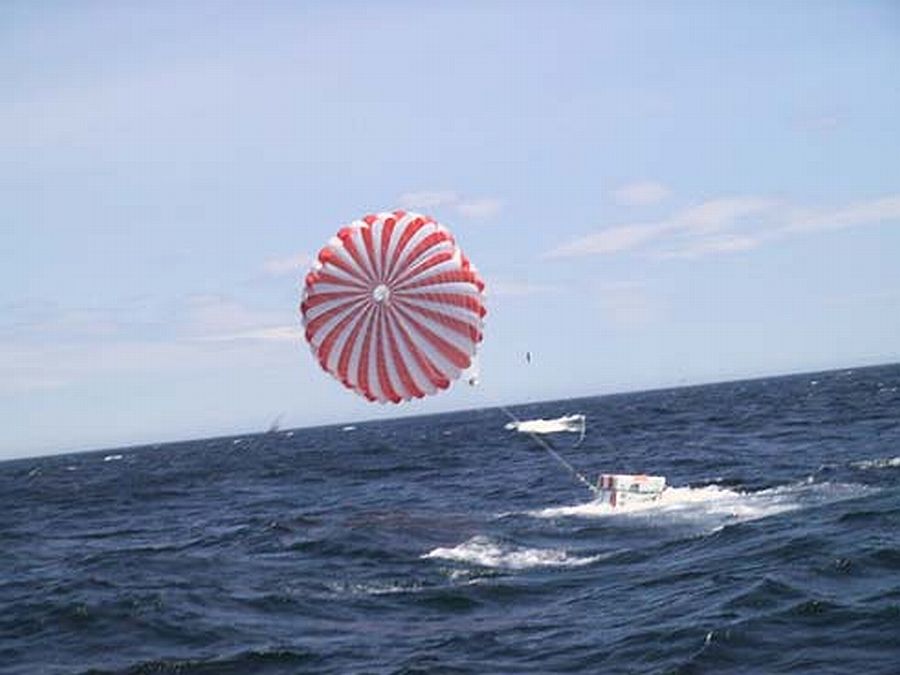Purpose of the flight and payload description
The CALET (CALorimetric Electron Telescope) mission aims to reveal high energy phenomena in the universe through a detector intended to be placed on the Japanese Experiment Module of the International Space Station. In that context several balloon-borne prototypes denominated bCALET will be used to test the concept, obtaining at the same time useful scientific data. Althought the size and complexity of the experiment will change from one mission to another, their basic structure remains unaltered.
In the scheme at left can be seen the distribution of the elements that composed the bCALET-1 instrument which is a 1/64 scaled down version of the full sized experiment for the ISS (click to enlarge). The upper part is an imaging calorimeter (IMC), composed of four layers for shower imaging. Each layer consists of a tungsten plate and two scintillating fiber belts arranged in the x and y direction and composed of 128 scintillating fibers of 1 mm2 of diameter each. The dimension of the IMC is about 128 mm x 128 mm while the total thickness of the tungsten plates equals to 1.3 radiation length (RL). The image measured by the IMC is used for estimation of the incident direction and shower development of cosmic rays. Signals of each fiber are detected by 64-anode Photomultipliers (PMTs) and then read out by eight front-end circuit modules reading each up to eight of the PMTs.
In the lower part of the instrument lies the total absorption calorimeter (TASC) with 6 scintillator layers each composed of four Bismuth germanate (BGO) logs measuring 25 mm2 of cross section. Alternate layers are orientated 90 degrees each other to provide x and y coordinates. The total thickness of the TASC is 13 RL and it's main function is to measure the shower development to determine the total energy of the incident particles and to discriminate electrons and gamma rays from protons. The BGO signals are measured by a single photodiode attached to each log and digitized by pulse height analyzer modules.
Two layers of 20mm-thick plastic scintillators (S1, S2) and the top layer of the TASC (B) are used as trigger system working in two modes: one to obtain only showering events and the other to record gamma-ray events. S1 act also as a veto counter being adjusted to eliminate effectively the background proton events.
All these elements are contained in a pressurized vessel and mounted in a protecting gondola.
Details of the balloon flight
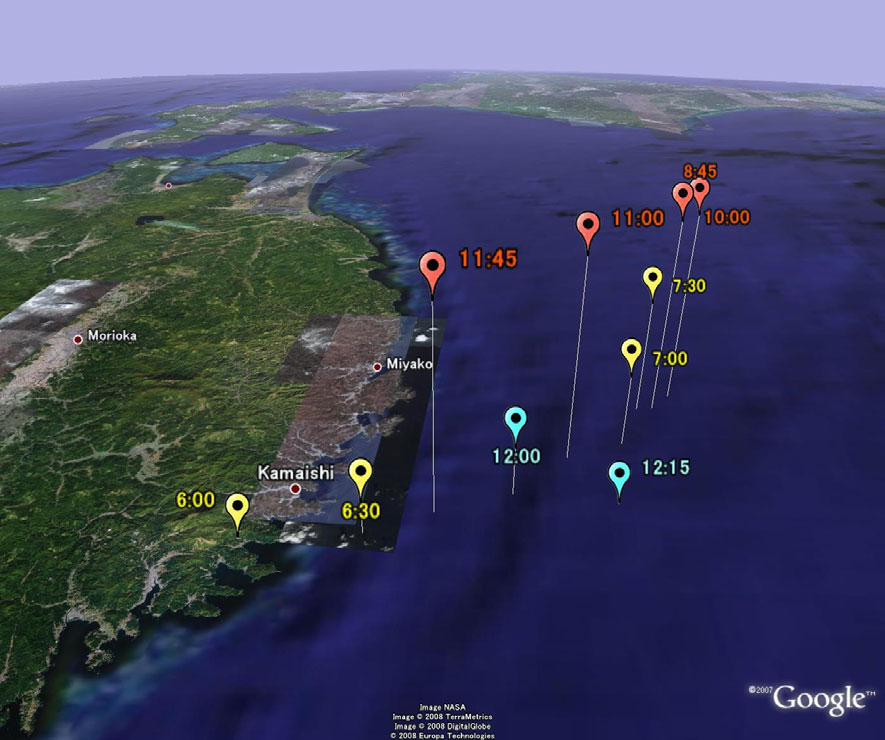
Balloon launched on: 5/31/2006 at 6:00 jst
Launch site: Sanriku Balloon Center, Iwate, Japan
Balloon launched by: Institute of Space and Astronautical Science (ISAS) / Japan Aerospace Exploration Agency (JAXA)
Balloon manufacturer/size/composition: Zero Pressure Balloon model B100 100.000 m3
Flight identification number: B100-14
End of flight (L for landing time, W for last contact, otherwise termination time): 5/31/2006
Balloon flight duration (F: time at float only, otherwise total flight time in d:days / h:hours or m:minutes - ): 6 h 20 m
Landing site: In the Pacific Ocean
The balloon was launched by vertical method at 6:00 local time on 31 May 2006 and after a nominal ascent it drifted eastward over the Pacific Ocean. After reaching the float altitude of 35 km it started a westward path during the phase of levelled flight wich lasted 3 hours and 30 minutes. The flight was terminated after 6 hours after launching and the payload was succesfully recovered from the ocean.
This was the first flight of the instrument and consisted in a scaled version (1/64) of the experiment to be installed in the future in the ISS.
During the 3 hours and a half of levelled flight bCALET-1 collected about 3000 electron trigger events and near 40.000 gamma-ray trigger events, and cosmic rays showers were clearly observed by the calorimeter.
The scientific team obtained data about the electron flux in the energy range between 1 and 10 GeV. This result was consistent with previous estimations. Something similar occured with the obtained flux above the rigidity cutoff range which showed good agreement with the results obtained by other balloon-borne instrument called BETS.
External references
- bCALET home page at Waseda University
- Balloon borne experiment with CALET prototype J. Phys. Soc. Jpn. 78 (2009) Supplement A pp. 165-168
- Balloon observation of electrons and gamma rays with CALET prototype 30th International Cosmic Ray Conference, Merida, MEXICO
- Information on the balloon flights performed during 2006 (In Japanese) ISAS Annual Report, 2006
- Polar balloon flights with a scaled version of CALET Mem. S.A.It. Vol. 79, 829
2677If you consider this website interesting or useful, you can help me to keep it up and running with a small donation to cover the operational costs. Just the equivalent of the price of a cup of coffee helps a lot.

